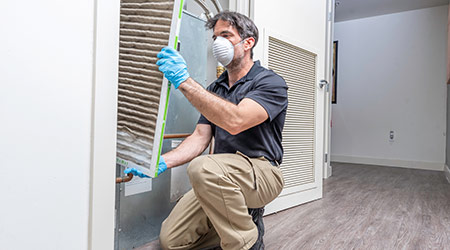While the initial focus of controlling the COVID-19 pandemic in hospitals involved sanitizing surfaces, scrutiny now has turned in large part to the role of HVAC systems and, in particular, air filters.
Hospital HVAC systems play an integral role in limiting the transmission of infectious diseases to other patients, healthcare staff and visitors, according to Health Facilities Management. The HVAC system is by no means the only safeguard to protect doctors and nurses from getting infected. The role of the appropriate personal protective equipment (PPE) is extremely important in providing the first level of defense. But an enhanced HVAC system design will minimize the recirculation of COVID-19-contaminated air in the hospital air distribution system.
As facilities professionals continue to learn more about the means of transmission of COVID-19, the design engineer and facilities engineer will need to work together to ensure that the modified hospital engineering systems are able to perform effectively to minimize the risk associated with nosocomial transmission of the coronavirus.
Mechanical ventilation systems are part of the mechanism for controlling airborne infection in the hospital environment. The goals of ventilation systems are to replace contaminated air with clean air, to minimize the mixing of dirty and clean air, and to regulate ambient temperature and humidity to help with asepsis and odor.
The minimum filtration requirement is mandated by the American National Standards Institute (ANSI)/ASHRAE/American Society for Health Care Engineering (ASHE) Standard 170-2017, Ventilation of Health Care Facilities, for specific filter efficiencies for all the spaces in the healthcare environment.
Click here to read the article.

 UF Health Hospitals Rely on Green Globes to Realize Their Full Potential
UF Health Hospitals Rely on Green Globes to Realize Their Full Potential How Healthcare Facilities Can Be Truly Disaster-Resilient
How Healthcare Facilities Can Be Truly Disaster-Resilient TriasMD Breaks Ground on DISC Surgery Center for San Fernando Valley
TriasMD Breaks Ground on DISC Surgery Center for San Fernando Valley Bigfork Valley Hospital Falls Victim to Data Breach
Bigfork Valley Hospital Falls Victim to Data Breach AI-Driven Facilities: Strategic Planning and Cost Management
AI-Driven Facilities: Strategic Planning and Cost Management